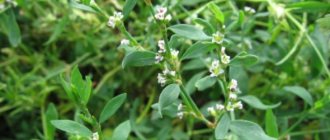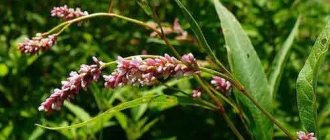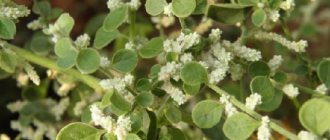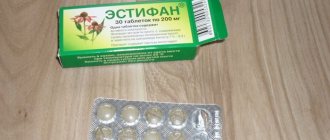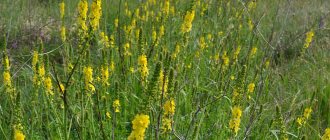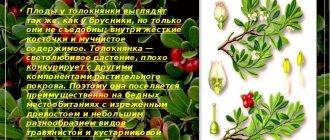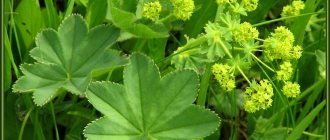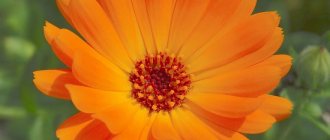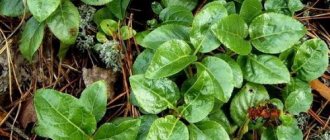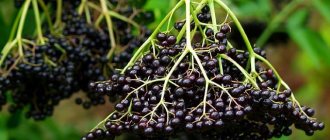Marsh grass is a widespread wild herbaceous plant that belongs to the genus Gnaphálium of the Asteraceae or Compositae family.
It has received recognition as an effective medicinal plant, both in folk and traditional medicine, which uses the medicinal properties of marshweed as an antihypertensive and sedative, as well as for diseases of the gastrointestinal tract, various damage to the skin, etc. The grass of marshweed is used as a raw material for the production of some pharmaceutical preparations.
The use of marsh cudweed in folk medicine is wider. Plant preparations are recommended for gynecological diseases, malignant tumors, etc.
Kinds
Sushenitsa is a genus that, in addition to marsh dried dried herbs, includes:
- related cudweed – Gnaphalium affine Don;
- Baikal cudweed – Gnaphalium baicalense & Kuprian. ex Kirp.;
- Kazakhstan cucumber – Gnaphalium kasachstanicum & Kuprian. ex Kirp.;
- Manchurian cudweed – Gnaphalium mandshuricum & Kuprian. ex Kirp.;
- Norwegian cudweed – Gnaphalium norvegicum Gunnerus;
- Russian cudweed – Gnaphalium rossicum;
- forest cudweed – Gnaphalium sylvaticum;
- Transchel's cudweed – Gnaphalium tranzschelii and others.
Marsh dry grass. Latin name : Gnaphalium uliginosum L.
Marsh dry grass. Other names : marsh cudweed, toad grass, toadgrass, cut (wormy) grass, voloshka, voloshki, gourd, crease, powder puff, dogs, dried flowers, etc.
Botanical description
Marsh grass is a herbaceous annual. Height: 10-25, up to 30 cm. The root of cudweed is taproot, short, thin, weakly branched.
The stem is spread-branched from the base, in the form of a bush. The leaves of the marsh grass are alternate, small, oblong-lanceolate, linear-oblong, obtuse, with one vein, narrowed towards the petiole. Length: 1-5 cm. Leaves and stem have silvery-white felt pubescence.
The flowers are very small, collected in small baskets, located in dense heads or bunches at the ends of the branches and surrounded by radiating upper leaves. Color: light yellow.
The fruit is an oblong, bare, smooth achene with a tuft of one row of jagged, rough hairs. Color: greenish-gray, light brown. Weight of 1000 seeds: 0.007-0.009 g.
Marsh cudweed blooms in June-August. The fruits ripen in July-October.
Propagated by seeds.
What does bog grass look like?
Photo: Yandex.Pictures
Marsh grass, also called marsh grass, belongs to the annual herbs of the Asteraceae or Compositae family. You can’t immediately distinguish it among the herbs. The grass is short, gray-green, as if sprinkled with dust. And at the same time, marsh cudweed is the sister of the famous mountain edelweiss.
Marsh grass can boast neither a long root nor a massive stem. The plant is completely inconspicuous, with a thin taproot, a low, branched stem of 5 centimeters.
The lower branches of cudweed are spread over the surface of the soil. The leaves are alternate, grayish, up to 5 centimeters long and up to 0.5 centimeters wide. The stem, leaves, and inflorescences are grayish-silver in color due to the abundance of hairs.
The flowers are small, light yellow, collected in small hemispherical inflorescences-baskets, which are located several at the ends of the branches. Swamp cudweed blooms in June - August, and the tiny fruits ripen a month after the start of flowering (in July - September).
The generic name comes from the Greek “gnafolan” and means felt, wool, and indicates the felt pubescence of the cudweed. The specific name “uliginosum”, translated “raw”, “wet”, indicates the habitat of the cudweed.
Habitat
Marsh grass is a plant common in cold and temperate regions of Europe, Mongolia, China, Korea, Japan, and North America. And also throughout the European part of the CIS, in the Caucasus, Western and Eastern Siberia, Kazakhstan, and the Far East.
Marsh grass prefers heavy soils with increased soil moisture. It can be found in wet and floodplain forests, in damp meadows and in places with inflows of soil water, along the banks of reservoirs (rivers, lakes, etc.), swamps, on the edges of ditches, and also as a weed in potato and rye fields. fields and gardens.
Territory of growth and collection
All types of plants are distributed throughout the world, most of them grow in many regions of Russia, Siberia, the Far East, the Caucasus and Kazakhstan. In Central and South America, cucumber is planted as an ornamental plant. Sushenitsa especially loves the wet banks of rivers, ponds, swamps, devoid of vegetation - hence the name swamp or swamp dried dried. This plant can often be found in potato or rye fields.
The main area for collecting grass is Central Russia and Belarus. Raw materials are collected from June to October, during the flowering period of the plant. The plants, cleared of soil and dust, are dried under the sun, after which the stems, leaves, and flowers are crushed to 8 mm. To preserve beneficial properties, raw materials are stored in paper boxes for no more than 3 years.
The effect of the healing properties of cudweed has been used in folk medicine for several centuries. In modern scientific pharmacology, only in the last decade has the herb been released as a medicine. Tinctures, decoctions, oil extracts and ointments are prepared from dried crushed shoots.
Collection and preparation
For medicinal purposes, the aerial part along with the roots of the marshweed is harvested. Collection is carried out during flowering. To restore the thickets, 2-4 mature mature plants should be left per 1 m2.
Drying of raw materials is carried out outdoors in the shade, under a canopy or indoors with good air ventilation, spreading it in a thin layer, not forgetting to periodically turn it over.
Ready-made raw materials for dried marshweed are stored in boxes and bags made of natural materials in a dry room with good air ventilation. Shelf life of marsh cudweed: 3 years.
Growing and cultivating dried berries
Celweed seeds are very small and germinate in the light much better than in the dark, so mulching the row significantly reduces the density of seedlings. Stratification of seeds increases the rate of their germination. To obtain normal seedlings, high humidity is required; when sowing seeds in the ground, a compacted bed plays an important role.
Sushenitsa responds well to the application of full mineral fertilizer before digging the soil.
It reacts especially strongly to the application of phosphorus fertilizers from the very beginning of development. The area for the dryweed should be sufficiently moist, with a light mechanical composition, clean from weeds and protected from the wind so that the seeds do not blow away.
For digging, add 50 g of nitrophoska per 1 m. The area is carefully loosened and compacted. Pre-winter sowing at the end of October is more reliable for obtaining good seedlings. Early spring sowing of stratified cudweed seeds can produce a yield no lower, provided it is carried out in the earliest possible time. Per 1 m2, 0.2 g of seeds mixed with a pinch of granulated superphosphate are sown in a continuous scattering method, if the area is without weeds, or in a row method with row spacing of 45 cm. Up to 5 g of seeds can be collected from 1 m2.
Chemical composition
The beneficial and medicinal properties of cudweed (herb) depend on the components in its composition. The plant contains flavonoids, tannins (up to 4%) and resinous (up to 16%) substances, essential oil (up to 0.05%), alkaloid gnafalin, phytosterols, as well as vitamins E, K, C, carotene (up to 55 mg% ), thiamine.
Of the macro- and microelements, the composition of marsh cudweed contains potassium (49.9 mg/g), calcium (15.7 mg/g), magnesium (2.9 mg/g), iron (2.3 mg/g), as well as boron (60 µg/g), cadmium (50 µg/g), lithium (18 µg/g), molybdenum (6.6 µg/g), bromine (4.8 µg/g), selenium (4. 5 µg/g), copper (3.65 µg/g), zinc (2 µg/g), etc.
Medicinal and beneficial properties of marshweed
Cushion herb has the following beneficial and medicinal properties:
- hypotensive,
- vasodilator,
- antispasmodic,
- sedative (calming),
- astringent,
- painkiller,
- hemostatic,
- antibacterial,
- anti-inflammatory,
- wound healing,
- restorative, etc.
Important! The information presented in the material is for informational purposes only. Before use, be sure to consult a specialist.
Use in folk medicine
A large number of people, freely using plants to treat various diseases, believe that they are absolutely harmless. However, among medicinal plants there are potent, toxic and even poisonous ones. In addition, many people, especially older people, have several chronic diseases.
Therefore, in order for the treatment to be effective, when using it, one should take into account the beneficial and medicinal properties of cudweed and the contraindications that the plant has, and this can only be done by a doctor. Based on this, before you start taking sweetweed preparations, consult a doctor, or better yet, a herbalist you trust. The information given below is for informational purposes only.
Cardiovascular diseases
As a medicinal plant, cudweed is used to treat a number of cardiovascular diseases. As an antihypertensive drug, official medicine recommends preparations of cudweed for hypertension (in the initial stages). The plant has an antispasmodic effect, dilates peripheral blood vessels, and helps with vascular spasms.
The properties of marsh cudweed are used for heart disease. Plant preparations slow down the heart rate, help relieve mild attacks of angina, especially at the initial stage, and improve heart function.
In addition, cucumber has an effect on varicose veins. Having a pronounced hemostatic and anti-inflammatory effect, the plant is recommended for the treatment of hemorrhoids and hemorrhoidal bleeding. For this purpose, both internal and external receptions are carried out in the form of baths and enemas, for which an infusion is used.
For the head
The beneficial and medicinal properties of cudweed are used for some head diseases, such as headaches, especially those arising from stress or nervous tension, migraines, and rushes of blood to the head. Plant preparations also help with epilepsy.
Colds and bronchopulmonary diseases
Both infusion and tincture of cudweed have shown a good effect as a bactericidal and hemostatic agent for abscess and pulmonary tuberculosis, including hemoptysis.
In the form of rinses, the plant is used for sore throat and chronic tonsillitis. The use of marsh cudweed internally is carried out for bronchial asthma.
Gastrointestinal diseases
In both official and folk medicine, cudweed is a recognized remedy for both the treatment of gastrointestinal diseases and for prevention. Plant preparations (infusion, decoction, tincture, etc.) improve digestion and intestinal motility.
Considering its anti-inflammatory and analgesic properties, cudweed is taken for gastritis with high acidity, including chronic gastritis, gastrointestinal colic, and bloating. Marsh cudweed has an effect on heartburn. As an astringent, it is prescribed for diarrhea.
The effectiveness of using cudweed for stomach and duodenal ulcers is high. A stronger effect for these diseases is provided by the combined use of marsh cudweed and blue cyanosis (roots).
Nervous system diseases
The medicinal properties of marsh cudweed have proven themselves well for diseases of the nervous system. Considering the sedative effect, the plant is taken internally in cases of increased nervous excitability, nervous overstrain, feelings of fear, insomnia, etc. As an addition, medicinal baths with infusion of marsh cudweed have a good effect.
For the pancreas
Plant preparations reduce blood sugar levels. Based on this, they use a decoction or infusion of dried marshmallow for diabetes.
Oncological diseases
Traditional medicine recommends both internal and external use of dried marshweed preparations for the treatment of cancer. For these purposes, a tincture of the plant is also taken.
Kidney diseases
Considering the hemostatic properties, treatment with cudweed is carried out for renal bleeding.
For women
Due to its beneficial and medicinal properties, marshweed has been used in gynecology. As a hemostatic agent, plant preparations are taken for uterine bleeding.
The decoction/infusion is used for douching for cervical erosion and Trichomonas colpitis. Also for these purposes, cudweed oil is used in the form of cotton swabs, which are placed in the vagina for 10-15 hours.
In addition, fungal diseases of the genital organs are an indication for the use of cudweed.
Oral diseases
Beneficial and medicinal properties of cudweed and its use is effective in the form of rinses for various inflammatory processes in the oral cavity, such as stomatitis, ulcers, etc. Helps with toothache.
Skin diseases
One of the indications of cudweed is skin diseases such as eczema, especially microbial eczema, fistulas, etc. For these purposes, use a decoction, infusion, tincture, dried oil, ointment in the form of washes, lotions, lubrication, etc. Baths with marsh cudweed showed good results. Also in folk medicine it is recommended to sprinkle wet eczema with dry grass powder.
Wounds, cuts
In both official and folk medicine, cudweed is widely used for various injuries of the skin. Plant preparations have a pronounced hemostatic, wound-healing effect, accelerate and enhance the regeneration and epithelization of the damaged surface.
Based on this, cucumber is used to treat wounds, including purulent and non-healing wounds, ulcers, including trophic ones, and burns. For these purposes, rinsing, irrigation, and lotions are applied using infusion/decoction/extract.
Also, the use of tincture, oily extract and ointment of cudweed has a good effect. So, for burns, use an alcohol-oil extract with egg white. Dry grass powder is sprinkled on wounds.
Preparations and procedures with cudweed are recommended for the treatment of gangrene.
For beauty
The benefits of cudweed have found application in cosmetology. A decoction/infusion of the plant is used in the form of washes and local baths for excessive sweating of the feet, palms and armpits.
The oil is rubbed into areas of baldness on the head. It is also used as a component to make homemade massage cream and masks for pale, aging skin.
For the whole body
Marsh grass is a medicinal herb that has a healing and restorative effect on the body as a whole. The plant contains a rich set of vitamins: E, K, C, carotene, thiamine. Increases immunity, which is especially important during the autumn-winter and winter-spring periods of colds and flu. Improves metabolic processes in the body.
Indications and contraindications for use
Instructions for use of marsh cudweed must be studied before processing. Preparations based on dried raw materials are indicated for use in the following disorders of vital processes:
- Skin diseases: burns, ulcers, wounds, eczema, erysipelas, erosion, increased sweating of the hands and feet, diathesis.
- Central nervous system disorders: insomnia, neurosis, severe nervous agitation, migraine, stroke.
- Diseases of the respiratory system: pharyngitis, tonsillitis, tonsillitis, tuberculosis, asthma.
- Gynecological diseases: cervical erosion, colpitis, vulvitis, thrush.
- Gastrointestinal disorders: ulcers, gastritis, heartburn, decreased peristalsis, pancreatitis, constipation, stomach pain, liver disease.
- Diseases of the cardiovascular system: bleeding, varicose veins, arterial hypertension, angina pectoris, tachycardia.
- Metabolic disorders: diabetes, inflammation of the urinary system, decreased immunity.
- Diseases of the musculoskeletal system: radiculitis, fractures and cracks of bones, osteomyelitis, bone tuberculosis.
- Oncology: as a tonic to improve the patient's well-being.
Swamp dry grass, its medicinal properties and contraindications must be taken into account before use.
It is not recommended to use herbal treatments containing cudweed raw materials.:
- People with a slow pulse (bradycardia).
- Patients with arterial hypotension (low blood pressure).
- Children under 18 years old.
- Patients with thrombophlebitis.
- Suffering from vegetative dystonia.
- Having high blood clotting.
- Patients with diseases of the biliary tract.
- With an individual reaction to the substance of the drug.
- During pregnancy and breastfeeding - with caution, only after consulting a doctor.
Dosage forms
Infusion (for internal use)
2 tbsp. Pour 250 ml of dried marsh grass. boiling water Cover with a lid, insulate and leave for half an hour. Strain.
Take 1/4-1/2 tbsp. 3 times a day before meals.
Decoction of marsh cudweed (for external use)
Pour 50 grams of marshweed grass (leaves, stems, flowers) into a liter of water, bring to a boil and simmer over low heat for 5 minutes. Remove from heat, cover, wrap and leave for 2 hours. Strain. Bring the resulting decoction to its original volume using boiled water.
Tincture of dried marsh marsh
In a glass container (preferably dark glass) 10 g. (2 tablespoons) pour 100 ml of crushed raw materials. quality vodka. Close the container tightly with a lid and leave for a week in a dark place at room temperature, remembering to shake periodically. Strain, squeeze out the raw materials.
Take 20-30 drops in water 3 times a day before meals.
Medicines, method of use and dosage
It is not used in the manufacture of pharmaceutical drugs.
- Infusion of the herb cudweed (infusum herbae Gnaphalii uliginosi): 10 g (2 tablespoons) of the raw material is placed in an enamel bowl, pour 200 ml. hot boiled water, cover with a lid and heat in a boiling water bath for 15 minutes, cool at room temperature for 45 minutes, filter, squeeze out the remaining raw materials. The volume of the resulting infusion is adjusted to 200 ml with boiled water. The prepared infusion is stored in a cool place for no more than 2 days. Take 1/3-1/2 cup 2-3 times a day after meals as an anti-inflammatory and antihypertensive agent.
- Decoction of the herb marshweed: 20 g of raw material is poured into 300 ml. boiling water, boil for 5 minutes, leave for 2 hours, then filter. Take in the same way as dried dried infusion.
- Oil extract of cudweed: 6 g of raw material is poured into 200 ml. vegetable oil, leave for 10 days, stirring daily, then filter.
- Infusion of cudweed herb 1 tbsp. a spoonful of crushed leaves and thin stems per 1 glass of boiling water, leave for two hours, drink half a glass 3-4 times a day. Powder from leaves without thorns - take 1 tsp. 3 times a day. Take 1 tsp of fresh grass juice. 3 times a day.
- An infusion of herbs used for thrombophlebitis is prepared as follows: pour 5 liters. boiling water 100-200 g of cudweed herb, infuse for 30-40 minutes, place the legs in the prepared infusion and keep them in it for 20-30 minutes. Foot baths are done systematically at night.
- An alcohol-oil extract from cudweed grass is prepared as follows: the coarsely chopped grass is moistened with a sufficient amount of 40% alcohol and infused for 12 hours in a sealed container at room temperature, stirring occasionally. Then sunflower oil is added to the mass, carefully heated in a water bath for 24 hours, then squeezed out and filtered through a dry filter. The finished cucumber extract is a transparent brownish-green liquid with a peculiar odor. Store in a cool, dark place in a well-closed glass container.
- For gastric ulcers with high acidity, a vitamin cocktail is used, consisting of a mixture of the following composition: motherwort herb 15 g, calamus root 15 g, marsh grass 15 g, St. John's wort herb 15 g, mint leaves 15 g, water 1.5 l and syrup taste.
- Recipes for using dried cucumbers in collections
Contraindications and possible side effects of dried fruit
Arterial hypotension, thrombophlebitis.
Traditional medicine recipes
For baths
200 gr. raw dried marshmallows pour 5 liters. boiling water Cover with a lid, insulate and set aside until cool. Strain. Pour the resulting infusion into the bath.
The temperature of the water in the bath should not exceed 37°C. The duration of the procedure is half an hour.
For foot baths, prepare an infusion at the rate of 50 g. herbs.
Oil
Fill a glass container (preferably dark glass) 2/3 full with dry crushed herb. Bring vegetable, unrefined oil (preferably linseed) to a boil in an enamel bowl. Remove from heat, let cool slightly and fill the jar with herbs to the top. Mix the contents.
Close the container with a lid and leave in a cool, dark place, for example, on the bottom shelf of the refrigerator, for two weeks, remembering to shake periodically. Then the oil along with the herb is heated in a water bath for two hours. When it cools down, strain and squeeze out the raw materials. Store in a tightly closed container in a cool place.
Ointment
In a suitable bowl, melt 4 parts butter (can be replaced with pork fat), add 1 part chopped dry herb. Place the container in a water bath and heat for an hour and a half.
Remove from heat, let cool until warm, strain. Mix the resulting mass with 4 parts of natural honey.
Store in a tightly closed container in a cool place, such as the refrigerator.
Preparation of medicinal raw materials
All above-ground parts of the annual are equally suitable for treatment. It is recommended to collect them in the summer, when the plant is at the peak of its growing season. It is important to wait until the identified inflorescences appear on it.
It is also acceptable to use immature seeds in herbal medicine, so it is recommended to complete the collection of the herb before the end of summer.
First you need to completely cut off the bush with a knife. After this, the raw materials are laid out on a litter or sheet of cardboard in the shade.
The most suitable option for natural drying of medicinal herbs is a well-ventilated attic, which is not exposed to direct sunlight, dust and flies.
If the weather does not allow you to harvest your grass this way, you can use an electric dryer.
In this case, the raw materials must be placed on pallets and the temperature control must be set to 50 ° C.
Dry grass should be cut immediately. Then it is poured into cardboard containers and stored for no more than 3 years. Make sure that there is no ultraviolet radiation in the place where the workpiece is located, as its effect negatively affects the constituent components of the potion.
